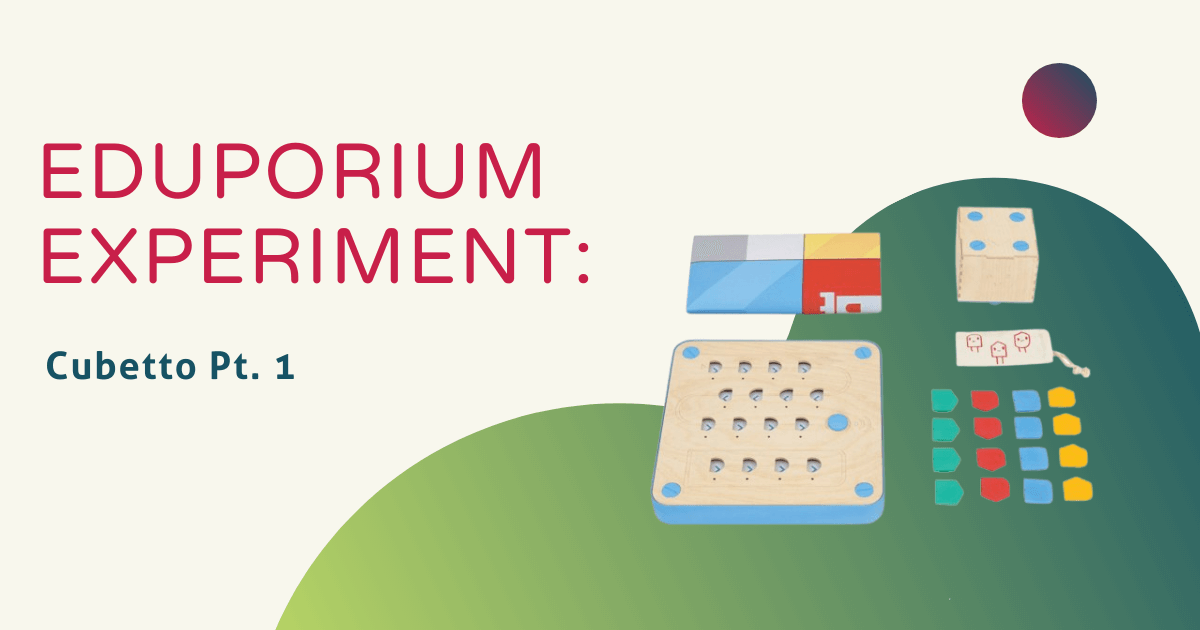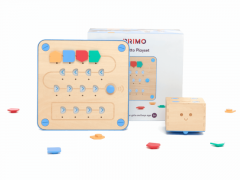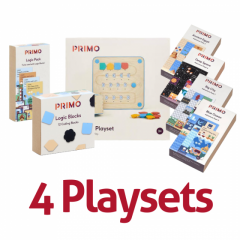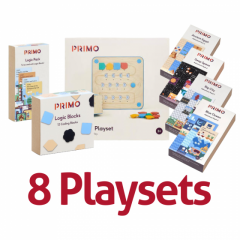In these times of rapidly advancing technology, it is sometimes difficult to remember that there are other ways to learn and teach subjects like robotics and programming without the aid of electronic devices, such as tablets, smartphones, and computers. While these disciplines are tied very closely with the use of screens, it is not always good to rely on them too much. In fact, some educators prefer to stay away from screens altogether. With that being the case, how can we make sure students are still getting the 21st century education that they need to succeed?
Luckily, early childhood education companies, like Primo Toys, are aware of this issue, and they care very much about making this type of critical education accessible to a very young audience. Their robot, Cubetto, thanks to its careful design, is revolutionizing the way educators teach coding to youngsters.
Being a visual artist myself, I appreciate things that have a tangible aesthetic appeal to them, and the first thing I noticed about Cubetto is that it definitely has that certain je ne sais quoi. Small enough to fit comfortably in little hands and made of a smooth, light wood with a cute little face, some might be surprised to learn just how complex this preschooler-sized robot really is!
The Cubetto comes in a box with three key pieces of equipment, besides the robot itself. One is a play mat decorated with beautiful illustrations in primary colors. This is Cubetto’s world. The other is a control board made of the same materials as Cubetto itself with the same great tactile feel. Finally, and most importantly, are the programming blocks—simple pieces of brightly-colored and distinctly-shaped plastic that make up the core of Cubetto’s educational potential.
It comes prepped to teach right out of the box with engaging instructional booklets full of lessons ready to guide students through the process of learning to code. Using the programming blocks, students can program Cubetto to drive around the play mat (or anything else they choose, like an obstacle course) by telling it to drive forward and turn left or right. Most interesting to me is the inclusion of the blue function block, which illustrates more complex programming concepts than just order of operations in a way that’s easily understood by kids as young as four years old.
By placing programming blocks inside the special function box on the control board, kids can discover that there is much more to making their robot move efficiently than they may have initially believed. Imagine they only have two forward blocks, but they have three function blocks. Without the use of the function block, they could make Cubetto move forward two squares. Or, they could introduce the three function blocks—place the two forward blocks into the function box, then place the three function blocks on the main control line and watch Cubetto drive forward six spaces instead! With this one block, kids can open the door to a whole new world of learning possibilities.
I have personally never seen a robot or any other toy quite like the Cubetto and I think it’s an amazing tool to bring into any classroom. It effortlessly replaces the need for screens in programming curricula while also making advanced coding concepts incredibly accessible for even the youngest of minds. It’s definitely a viable classroom tool in the K-3 grades, whether in a public school, Montessori, or anywhere else in between and beyond!
If you have a product you’d like to see featured in the Eduporium Experiment, let us know by sending us a message on Twitter or Facebook! Look out for the next edition as well, featuring Bloxels! And, don't forget to purchase your own Cubetto playset by visiting the Eduporium store!






